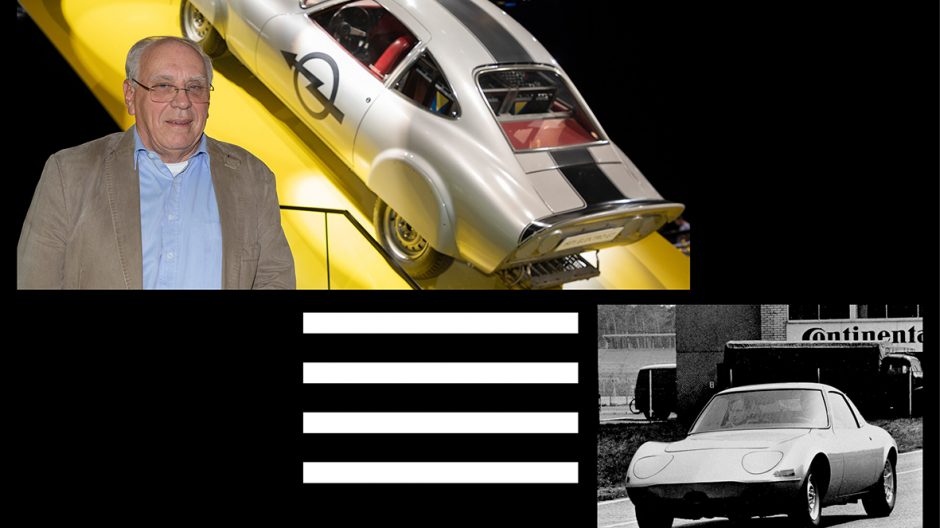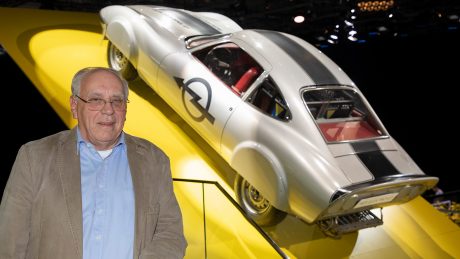
 Greenpeace,
Greenpeace,
The Aswan Dam
And The Elektro-GT
1971 was the year that a group of pacifists founded a non-profit organization in Vancouver, Canada, that would go on to campaign for environmental protection across the world. The Aswan Dam was first put into operation in Egypt that same year. Ernst Rapp has not seen the Elektro-GT since Greenpeace activists first went out on the frontlines and a wall was put in place to keep back the waters of the Nile. It was Rapp, who assembled the first Opel electric vehicle by hand, piece by piece. The 71-year-old has now finally been reunited with it as part of “OPELHAUS 120” at the IAA. He visited Frankfurt together with his wife Martha.
![]()

![]()
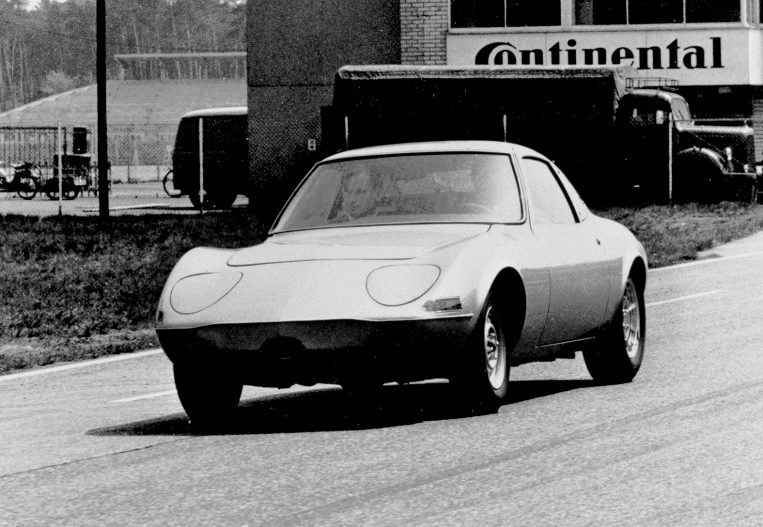
A legendary car that broke boundaries: The Elektro-GT produced in 1971 set the course of e-mobility development at Opel.
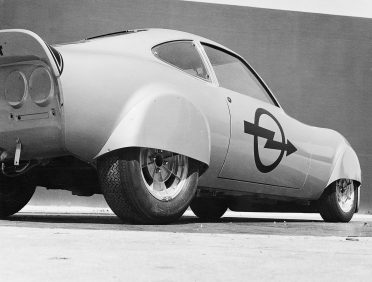
A true rarity: Only one model of the electric vehicle based on the Opel GT was ever produced.

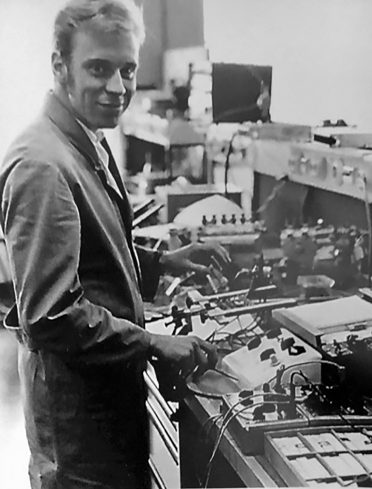
Trained electrician and enthusiastic model maker: Ernst Rapp had found his vocation early on. This photo was taken in 1970.
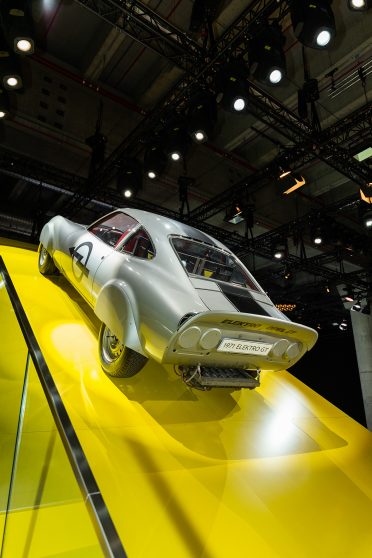
Back in the spotlight: 48 years after it was first produced, the Elektro-GT returns to the Opel stage at the IAA.
![]()
The Elektro-GT’s world records
In May 1971, Georg von Opel set six new world records for electric vehicles at Hockenheim. He achieved 188.86 km/h over the “flying kilometer” – a measurement that indicates speed after the starting and acceleration kilometers. Excluding this figure (or “stationary”), the Elektro-GT could reach 115.88 km/h – which happened to be another world record. It was the same for the “stationary” 500 meters, for which 92.98 km/h was measured, and the stationary quarter of a mile at 85.87 km/h. The powerful electric vehicle mastered ten kilometers at an average speed of 126.89 km/h, and ten miles at 127.15 km/h.
![]()
“The car’s appearance has remained virtually unchanged,” Rapp points out. Jens Cooper from Opel Classic is the person who has preserved the vehicle’s façade throughout the years. The expert in classic models is the person who invited the couple from the southwestern German town of Eppingen here. The contact was made by chance, a year ago Rapp visited his friend’s birthday. Here is where he met the Opel retiree Hajo Döge. “I once built a car for the grandson of the great Adam Opel,” Rapp began. After he had recounted his story, Döge got in contact with Cooper.
The story begins in 1970. Ernst Rapp was in his fourth year of working in the special department for custom-made models at Bosch in Stuttgart. This is where the young electrician ended up after saying he was an avid model builder when he was first recruited. His father, a design engineer of gliders, passed down this hobby to him. “People who are able to build planes from wood are perfect for this department,” he was told.
![]()
![]()

![]()
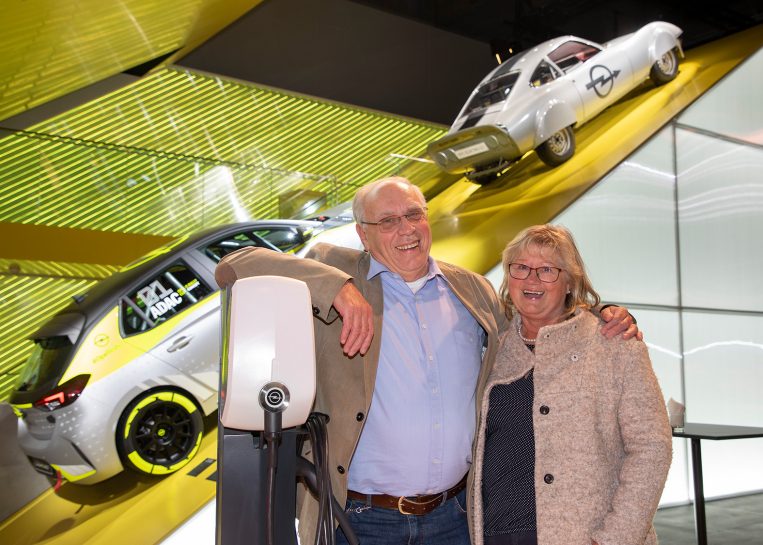
Visiting the Opel stand: Ernst Rapp and his wife Martha visit “OPELHAUS 120.”
![]()
Georg von Opel Goes Undercover
Rapp caught sight of a man on the lot who was rumored to be Georg von Opel, the grandson of the great Adam Opel – and it was claimed that he was there on a secret mission.
An Opel GT showed up in Rapp’s workshop shortly afterwards. All it consisted of was a chassis – otherwise, it was bare. The rest was left up to the young prototype engineer to design. The components to be installed would be delivered to him separately – an electric engine being the most important element. Georg von Opel, who was 59 years old at the time, wanted to prove to the world the future viability of this drive system, while also setting a number of world records – but all this had to remain a closely guarded secret.
![]()

![]()

“Opel goes electric”: The Corsa-e Rally and Elektro-GT are real head turners – not just because of their slanted position.
![]()

![]()

The Modifications
The Elektro-GT was aerodynamically optimized, all air intakes in the front area closed, rear view mirrors removed, as well as the door handles. An electric fan was installed to cool the electric motors and the brake booster was equipped with an electric vacuum pump. Due to the weight of the batteries, the chassis had to be equipped with harder springs. After all, the
Opel GT had a total weight of up to 1.7 tons.![]()
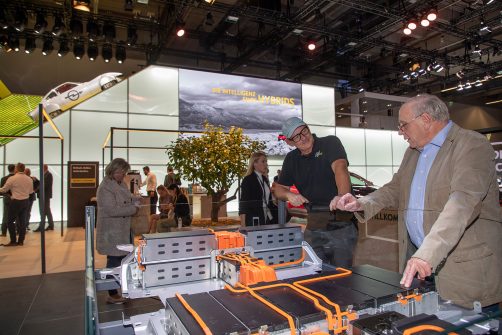
Talking shop: Ernst Rapp (right) and Jens Cooper chat about the battery in the new Corsa-e.
![]()
Georg von Opel had carefully selected Bosch as his partner for this special order. Back then, the Stuttgart-based company was considered a pioneer in all things related to electric engines, and had already experimented with technologies such as lead batteries, which had unfortunately turned out to be highly toxic. “I used nickel cadmium batteries for the Opel,” says Rapp.
Rapp in His Element
Accommodating the batteries, engine, cooling fan, control system, and much more in an Opel GT proved to be an incredibly challenging, tricky task over the course of the following four weeks. “My fellow workers made bets that I would never manage it,” the technician recalls. What they didn’t know was that Rapp had gotten cardboard from the shipping department and made a template of the model when he first began the project. This allowed him to test the layout of the components without losing too much time. Last but not least, he decided to opt for a right-angle design on the passenger side and behind the driver’s seat.
Georg von Opel came around two or three times during this period to see how work was progressing – “but he only spoke to my boss, unfortunately.” It was not possible to carry out test drives in the Elektro-GT. When his creation was finally loaded up and transported in the direction of Rüsselsheim, Ernst Rapp had at the very least been impressed by its performance at the brake test stand. It soon turned out to be great success on the Hockenheimring.
![]()

![]()
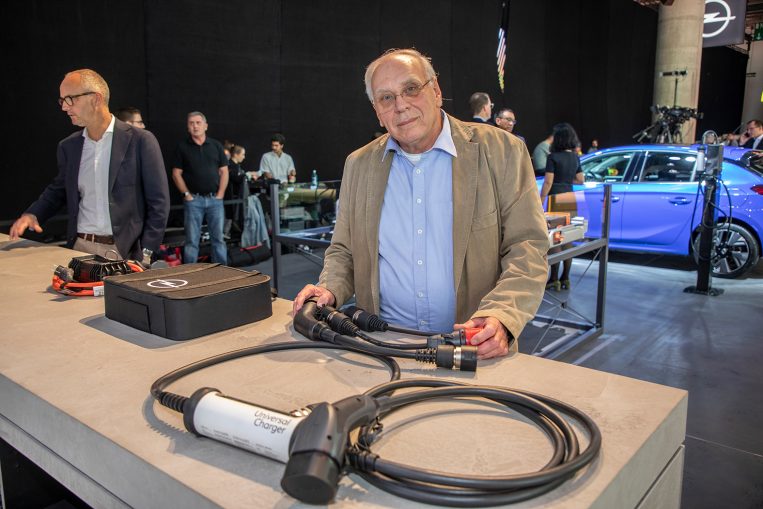
Always works, everywhere: Ernst Rapp with the universal charging cable by Opel.
![]()

One Wish Stays Unfulfilled
Ernst Rapp later learned about the world records that Georg von Opel set with the Elektro-GT in the sports press. In 1972, the tinkerer went to work for the press manufacturer Dieffenbacher. He still came into contact with Opel in the following years through his job. He went into retirement six years ago, but has since kept up on model building with his grandchildren. And once a week he holds a workshop for teenagers at the local school in Gemmingen – this all “keeps [him] young.”
He never heard anything more about the Elektro-GT – that is, until Jens Cooper got in touch with him. However, he wasn’t able to take a closer look at the inside of his creation at their joint visit to the IAA. The prototype was presented at the Opel stand in an extremely slanted position, suspended above its spiritual descendant, the Corsa-e Rally.
However, Ernst Rapp had the opportunity to take a look under its tailgate at the Classic workshop in Rüsselsheim. He was ecstatic to discover some stickers that still bore his signature. And of course, Rapp is delighted that Jens Cooper has managed to preserve this one-of-a-kind model with such devotion.
But one wish that crossed both of their minds immediately simply cannot be fulfilled, and that’s putting the Elektro-GT in motion. “You just can’t use the electronics they used back then today,” the two experts say, shaking their heads. Fitting out the vintage car with new technology would simply be too complicated.
September 2019![]()
